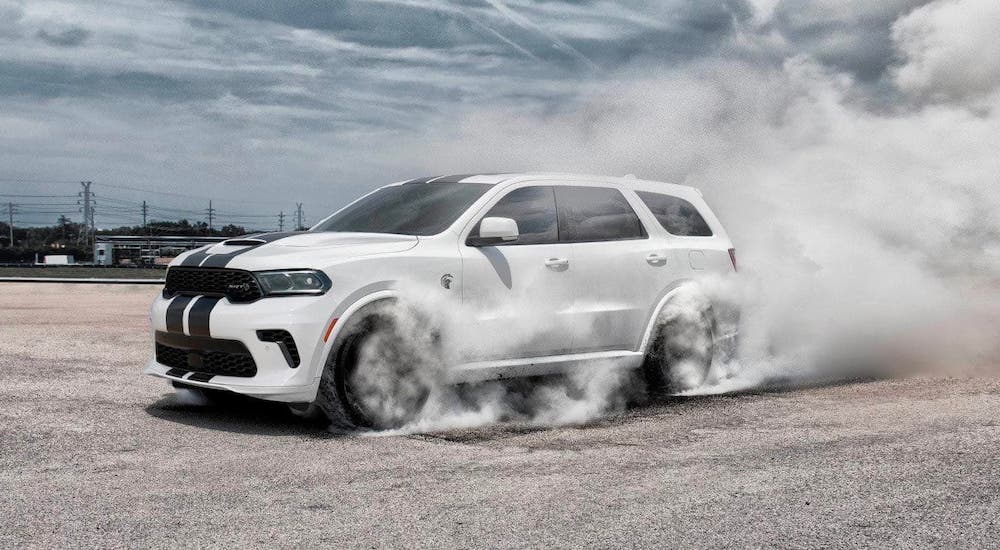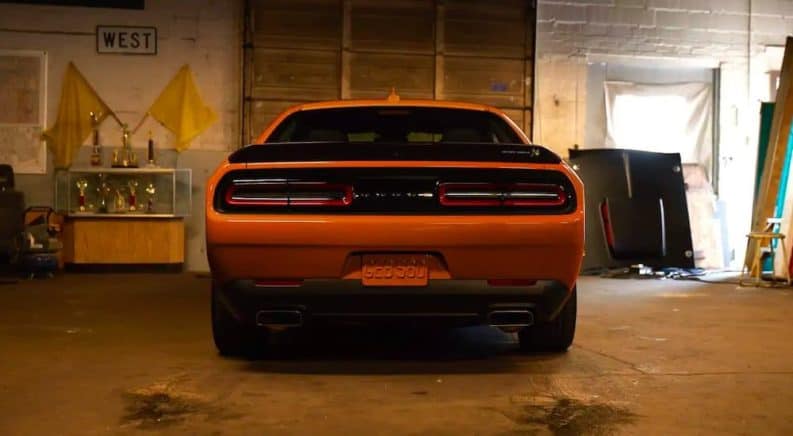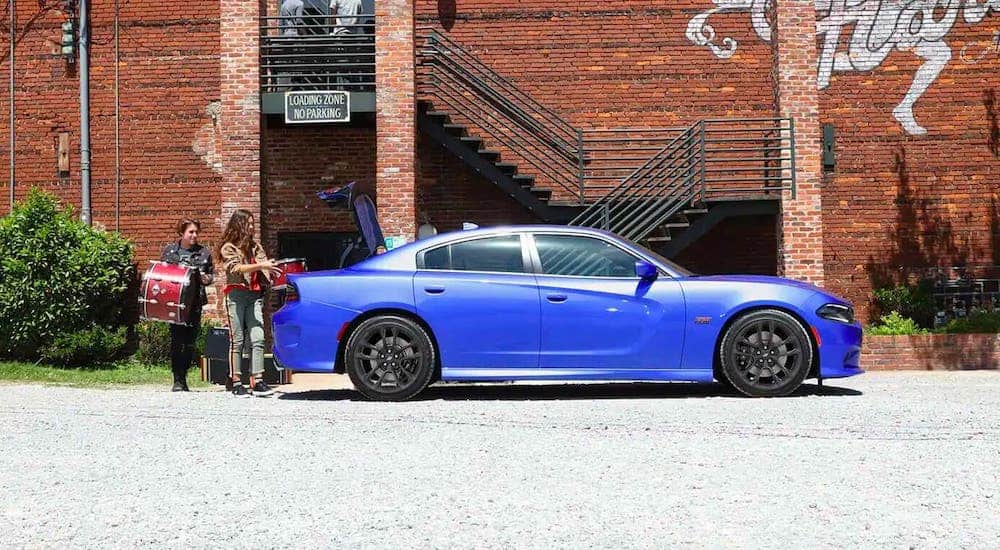Dodge is known for producing some of the most recognized and memorable muscle and sports cars you can get your hands on. But whether you have a model from the bygone era when V8s ruled the streets or something from the current crop of Challengers and Chargers, nothing makes a muscle car better than modifying it for greater power, handling, comfort, and plain individuality. Unfortunately, not every state is inclined to accommodate drivers who indulge in aftermarket performance upgrades; and if you’ve grabbed a beefy sports car from a California Dodge dealer, there are some things you need to know about The Golden State’s strict emission and vehicle modification policies before you get knee-deep in tuner culture.
Not Every Modification Is Street Legal In California
If you’re thinking about moving to California or if you already live in California, there are a number of rules and regulations you have to abide by when it comes to driving the streets and roadways in the Golden State. Some modifications and performance parts that are legal in other states may not be legal in California. As a result, this means that some parts that you currently have on your Dodge or parts that you were thinking about adding to your Dodge may not be viable in your neck of the woods.
For instance, electronic ignition replacements, fuel injectors, distributors, headers, intake manifolds, and engine replacement parts all have to be certified with executive orders before they can be installed in your vehicle. If they don’t have the exemption, then it’s illegal to add those parts to your vehicle in the state of California. The most important rule to follow is the one related to air pollution or carbon emissions. The California Air Resources Board has strict regulations on what auto manufacturers are allowed to produce when it comes to performance parts for vehicles sold in the state.
There are different categories for vehicles and parts that may or may not be street legal, but OEM replacement parts are considered acceptable in the state. You’ll still have to check the guidelines if you’re looking for OEM performance parts as opposed to basic replacement parts to ensure that the vehicle and the parts don’t exceed the standards set by the emission tests. Fortunately, the Air Resources Board website has a tool that allows you to check if any part is okay.

Emission Tests and OBD II Checks
Before considering the modification process of your vehicle, you will need to have it tested for emissions output. In California, this can include either a dynamometer test where the vehicle is given an actual running test for emissions from the tailpipe or an OBD II check, which consists of checking for potential problems that may not appear during a dynamometer test. The OBD II check is a plug-in test that can check for a number of possible emissions a vehicle can output that doesn’t entirely relate to what comes out of the tailpipe.
For instance, the OBD II can check for misfires, which can result in failing the test. Misfires that occur more than once due to leaks, valves, or cracks will result in a failure of the test. If the “Check Engine” light comes on during the OBD II check, it may also result in a failure of the test. If certain vehicle monitors, diagnostic systems, or sensors are not active during the check, it may also result in the failure of the test. Altering or modifying certain parts may impact the way a vehicle behaves during the systems check, which is why it’s important to know how each aftermarket or performance part alteration affects the way your vehicle behaves, especially if you’re planning on driving it in California.
Aftermarket And Performance Part Exemptions
On the upside, there are exemptions to some of California’s strict emission regulations. For instance, vehicles considered “Uncontrolled” can be given an exemption from the order, and aftermarket parts are not restricted on how you apply them to said vehicles. These are older vehicles that were generally manufactured before 1967. However, be sure to double-check the law where your vehicle is concerned because the cutoff date for some models is 1965. Unfortunately, this means that some of the most iconic Dodge muscle cars just barely miss out on these aftermarket exemptions, such as the 1969 Dodge Charger or the 1970 Dodge Challenger.
Furthermore, some of these vehicles aren’t entirely exempt from all of California’s aftermarket and performance part regulations. They can still be modified with aftermarket parts but must still be able to pass the tailpipe emission tests from the year of their manufacture. It’s also possible to make use of catalytic converters for older vehicles. However, catalytic converters sold or applied to vehicles in California require the manufacturer or supplier to receive an executive order from the state officials to not only comply with the EPA’s standards but with California’s emission codes as well.
Mopar Performance Parts
If you’re planning on grabbing a muscle car, new or old, from a California Dodge dealer, there is a silver lining to some of the state’s regulation woes: Mopar Performance Parts. Mopar is the original equipment manufacturer arm for Dodge, providing owners of the company’s vehicles with ways to improve, enhance, update or upgrade their vehicles. The best part about Mopar is that the approved aftermarket kits they provide are legal in all 50 states. So if you decide to apply a state-certified performance stage kit to your Dodge, you don’t have to worry about it being illegal.
The Mopar store also provides a number of interior, exterior, and performance-related parts and upgrades for your vehicle, letting you know which parts are tested and certified for approval in California and which ones aren’t. However, some performance upgrades are certified or granted exemption via executive order, while others are not. You will have to check the part for the make and model of your vehicle before assuming that all Mopar replacements, parts, and upgrade kits are legal in the state of California. While vehicles like the Dodge Charger and Dodge Challenger are designed around performance, getting your hands on performance upgrade kits may be a little more difficult with some other Dodge vehicles, simply due to some of the restrictions within the state.
50-State Legal Performance Parts
If the upgrades, alterations, or aftermarket kits you would like to apply to your Dodge aren’t available from Mopar, there are other alternatives available. A number of aftermarket suppliers and vendors will let you know if their parts are street legal and compliant with California state laws. Some vendors will have a list of all the parts you can outfit your vehicle with that are legal in all 50 states.
When you visit vendors, it is a good idea to look for specific stamps that say “50-state legal,” which means that you can drive your vehicle with those modified parts into any state without having any problems. Most of the troubles with legalities will come into play with the powertrain, whether it be the intake manifold, the transmission, or the exhaust because anything that modifies the power to the vehicle could also alter its emission output.
Of course, you’ll still want to check the rules and regulations regarding regional ordinance before you commit to modifying a vehicle like the Dodge Charger or Challenger. Make sure that any aftermarket part you add to your vehicle or performance modification you purchase is CARB certified or exempt via executive order. While it is always fun to put a little extra flex in your vehicle’s muscle performance, not doing your research may just make your vehicle illegal to drive in California. So keep that in mind the next time you eye an upgrade kit for your Dodge.





